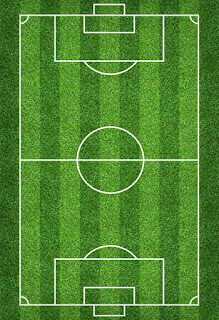Football and History
Football and History
Football, also known as soccer in some parts of the world, is one of the most popular sports globally. It is a team sport played between two teams of eleven players each, where the objective is to score more goals than the other team. The game is played on a rectangular field with a goalpost at each end, and the ball is passed around between players using their feet to control it. The game is fast-paced, requires a high level of skill, and involves physical contact between players.
- History
The origin of football can be traced back to ancient civilizations such as Greece, Rome, and China, where the game was played with a ball made of animal bladders and leather. However, the modern version of football that we know today was first played in England in the 19th century. It is said that the rules of the game were first established in 1863 by the Football Association in England.
- Rules and Regulations
The rules of football are relatively simple, but they are essential to ensure fair play and safety for all players. The game is played in two halves of 45 minutes each, with a 15-minute break in between. The objective of the game is to score more goals than the other team by kicking the ball into the opposing team's goalpost. The team with the most goals at the end of the game is declared the winner.
The ball used in football is round and made of leather or other suitable materials. The dimensions of the field can vary, but it is generally around 100-130 yards in length and 50-100 yards in width. The goalpost is located at each end of the field and consists of two vertical posts and a horizontal crossbar. The distance between the two posts is 8 yards, and the height of the crossbar is 8 feet.
Each team consists of eleven players, including a goalkeeper, defenders, midfielders, and forwards. The goalkeeper is the only player allowed to use their hands within their designated penalty area. The other players can only use their feet, legs, torso, and head to control and pass the ball. Players are not allowed to touch the ball with their hands or arms, except for the goalkeeper within their penalty area. Players are also not allowed to use excessive force or make dangerous tackles that could injure other players.
- Scoring
To score a goal in football, a player must kick the ball into the opposing team's goalpost. The entire ball must cross the goal line between the two posts and under the crossbar. If the ball hits the crossbar or post and bounces back into the field, it is not considered a goal. If the ball is kicked over the goalpost, it is also not considered a goal.
If the game ends in a tie, additional time may be added, or a penalty shootout may be conducted to determine the winner.
- Equipment
The equipment required to play football is relatively simple. Players must wear a shirt, shorts, socks, and appropriate footwear such as football boots with studs or cleats to provide grip on the field. The goalkeeper must wear gloves and a different colored shirt from the other players to distinguish themselves.
- The referee
A referee oversees the game to ensure that the rules of the game are followed and that fair play is maintained. The referee has the power to award free kicks, penalties, and even send off players who commit serious offenses. There are also assistant referees who help the referee with decisions such as offside and throw-ins.
- Famous Players and Teams
Football has produced some of the most famous and talented players in the world, including Lionel Messi, Cristiano Ronaldo, Neymar Jr, and Mohamed Salah. Some of the most successful football teams in the world include Real Madrid, Barcelona, Manchester United, Liverpool, and Bayern Munich.






Comments
Post a Comment